I've always fancied having stripped, non hirsute trunked Trachycarpus palms in the garden but somehow we have never managed to have any. Nor had we the chance to do some palm stripping ourselves despite actually knowing how to do it. All theory, no practise and that's no good!

Take it all off baby!
So we decided to end such an omission by finally giving a 'full Brazilian' to a decent sized trunked Trachycarpus wagnerianus this weekend.I must say though that it took me awhile to warm up to the idea of having stripped Trachycarpus palms in the garden. When I first saw one done many years ago I wasn't even sure how to react to it. Is it a good thing or a bad thing? Will stripping cause any ill effects on the palm or decrease the hardiness? After all, such a hairy mass of fiber surrounding the trunk surely must serve a purpose, one of which may be to insulate and protect the palm from cold weather....
Turns out that trunk stripping is a more common practice than I first perceived it to be and those who have had stripped ones for many years in the UK have reported that they have not noticed any difference to the hardiness nor vigour and health of the palm compared to those that were left as they were. Which means you get to have another option on what 'look' to go for, hairy or bare without adversely affecting the health of the palm.
Sounds good to me!
But, more importantly do we actually like the way it looks? Again, when I first saw one, with a creamy white trunk and looking alarmingly more slender than what I was accustomed to I wasn't sure if I liked it. Gaz however liked it from the very beginning. However, when I saw one in the flesh that had been stripped for quite some time and the trunk looking brown all over I loved it and was eventually converted!
So fast forward to the present and we finally managed to do some stripping!
So how do you go about doing it and what tools and materials do you need?
First, you need a specimen that has a decent length of trunk. The taller the better! Too short and you won't appreciate the distinctive appearance of a bare trunk and it will just look squat. Small and a juvenile specimens are a no go, there's no trunk to expose to begin with and even if there is an inch or more of trunk forming that's still too little to expose and you might end up harming the plant when slicing the fibres off.

As for the tools, all you need really is a sharp cutting or Stanley knife and that's about it! A pair of sharp scissors might come in handy though to remove some finer hairs and smooth off the trunk afterwards.
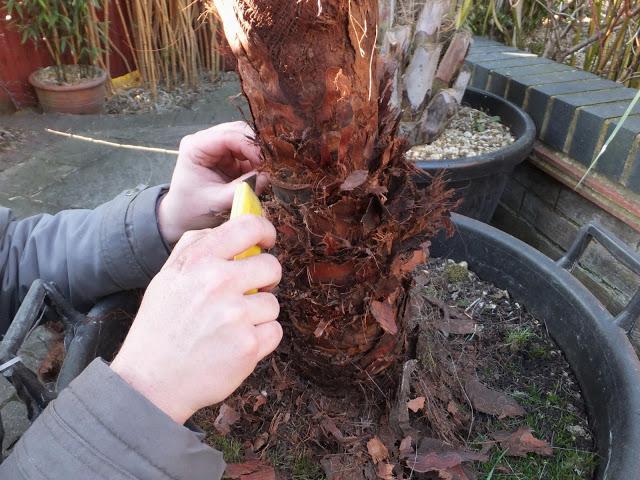
A sharp cutting knife is essential.
And you'll need a large bin too, to place all of the fibres you will be removing from the trunk.
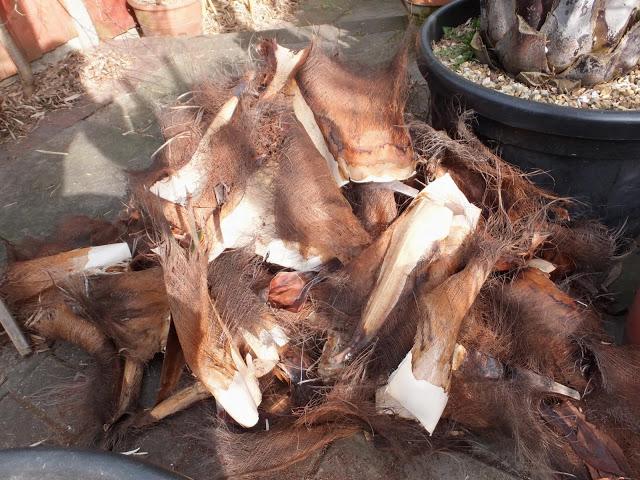
Bin or keep? You can perhaps come up with a creative or functional use for these fibres.
Begin from the base and remove as much of the loose fibres as you can by hand. You may find that some of the fibres are coming off on their own already with very little effort, exposing the slender bare trunk underneath. That's how it is anyway au naturel, eventually fibres start to come off on their own starting from the bottom and gradually upwards for specimens left to their own devices after many, many years.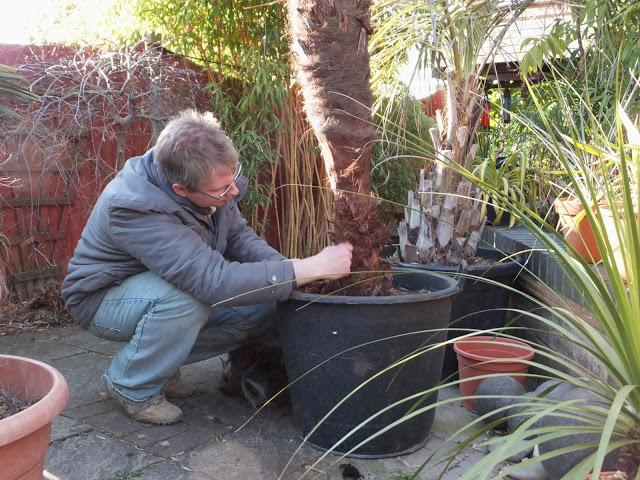
Then, once you have removed as much as you can by hand, use the cutting knife to remove any that are still attached until you get a smooth trunk.

Work your way up, cutting on to the old leaf bases, peeling them and the fibres off which gradually exposes the trunk.
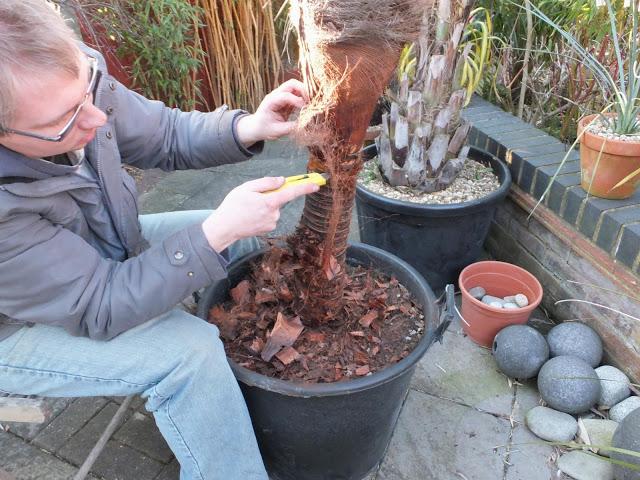
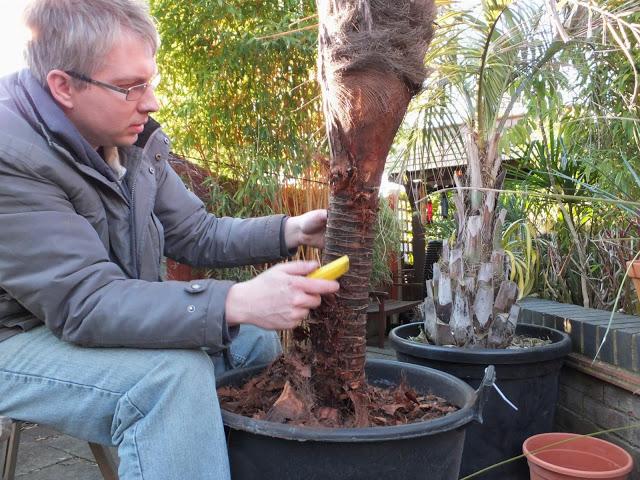
Up, and up, and continue until...
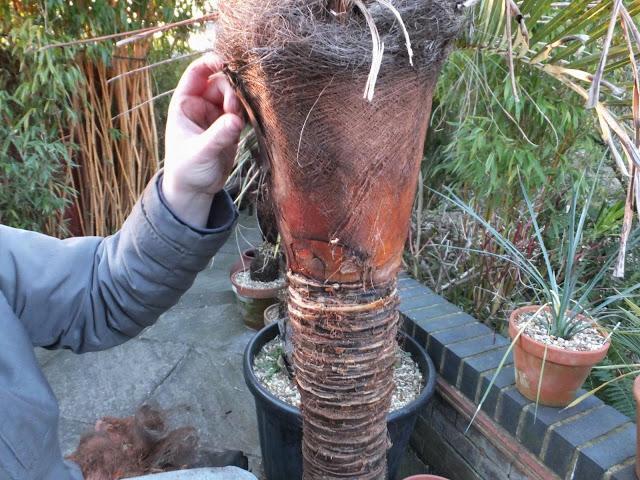
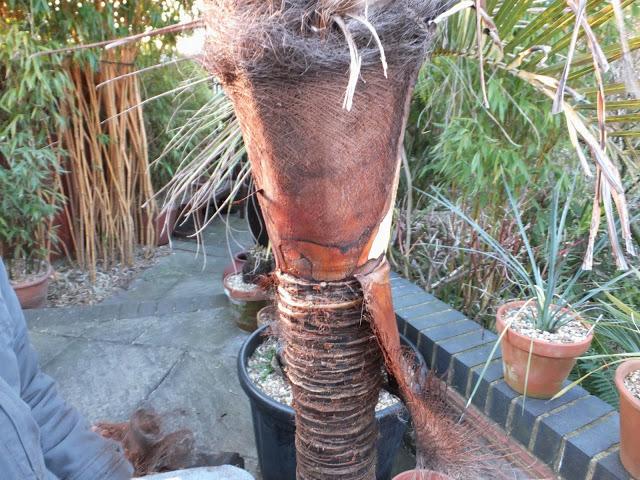
You eventually reach the layer before where the leaves start. You then need to carefully remove the last layer of fiber.

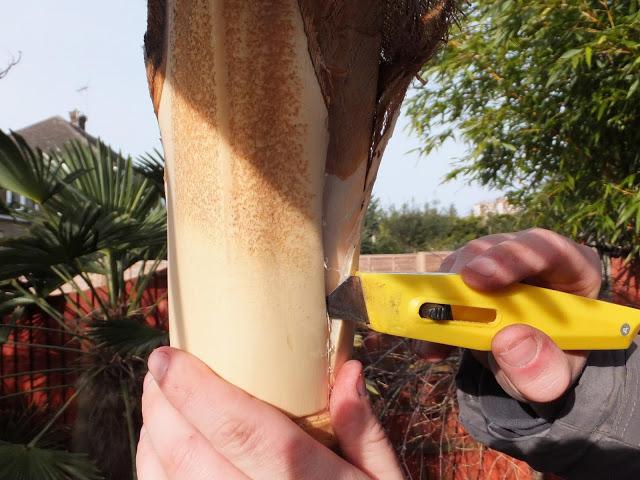
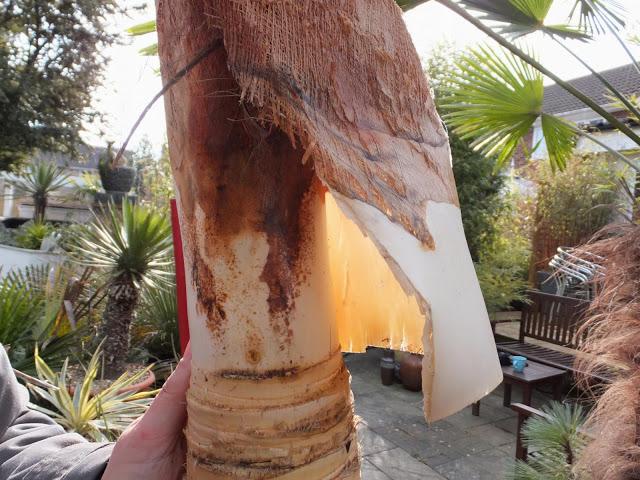
With the trunk bare and exposed, there's no point leaving a fluffy top so finish the job off by cutting the excess fibres where the crown of the palm is.

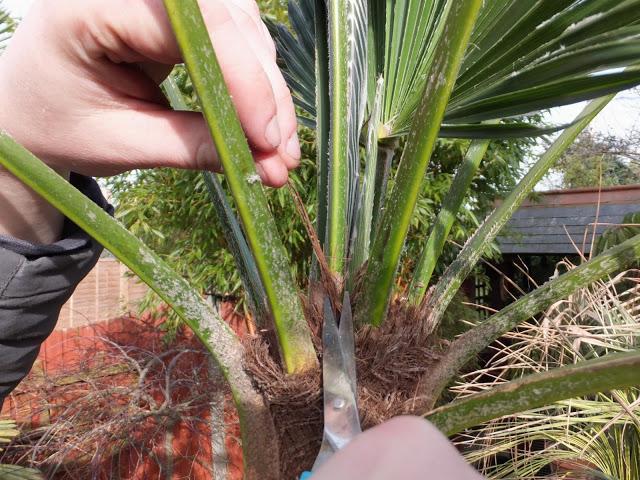

Then go over the exposed trunk again with a pair of scissors, cutting off any stray fibres left for a smoother finish.
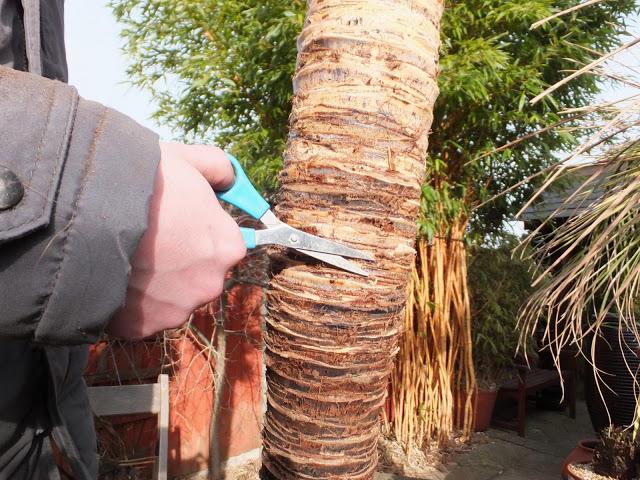
When you first strip a palm, the trunk will probably on the whole look more on the pale side but gradually this will turn brown in the following weeks as they are left exposed.
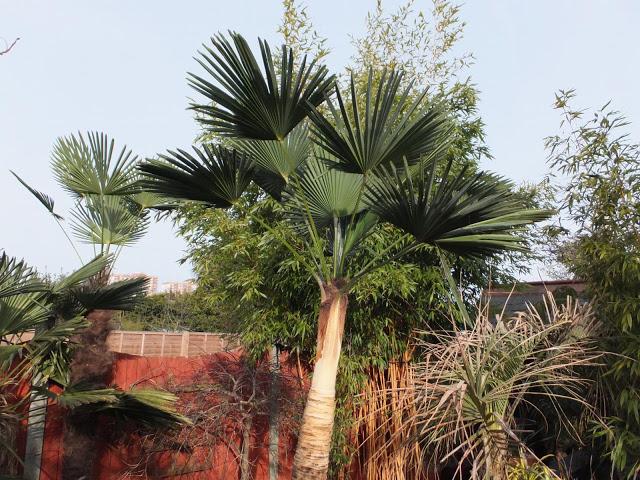
Voila!

Beside a specimen left as it is. Fascinating how slender the trunk is underneath all that fibre
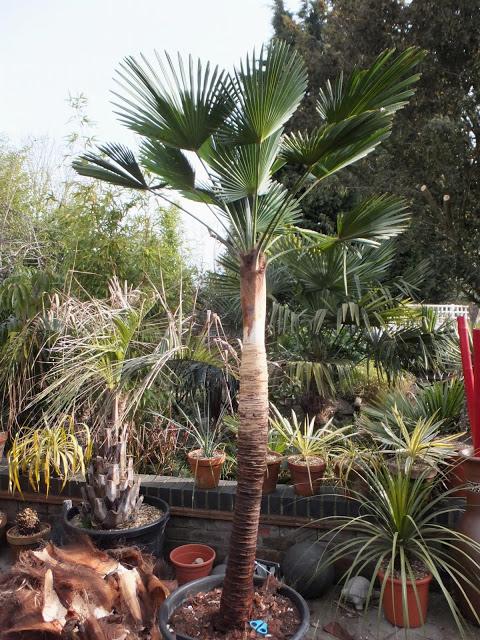
On its own
Stripping a Trachycarpus palm is one of those topics that tends to be a subject of debate for many gardeners. Good or bad? Yay or nay? Like or loathe?All a matter of preference. But I'm so glad we finally have one, we love it! It just gives this ever reliable palm a different dimension when it comes to its appearance. But we don't prefer it over the hairy, natural ones either. We like them both equally now.

What about you, any preference? And would you consider having a go at stripping one yourself if you haven't done so before?
Mark :-)

